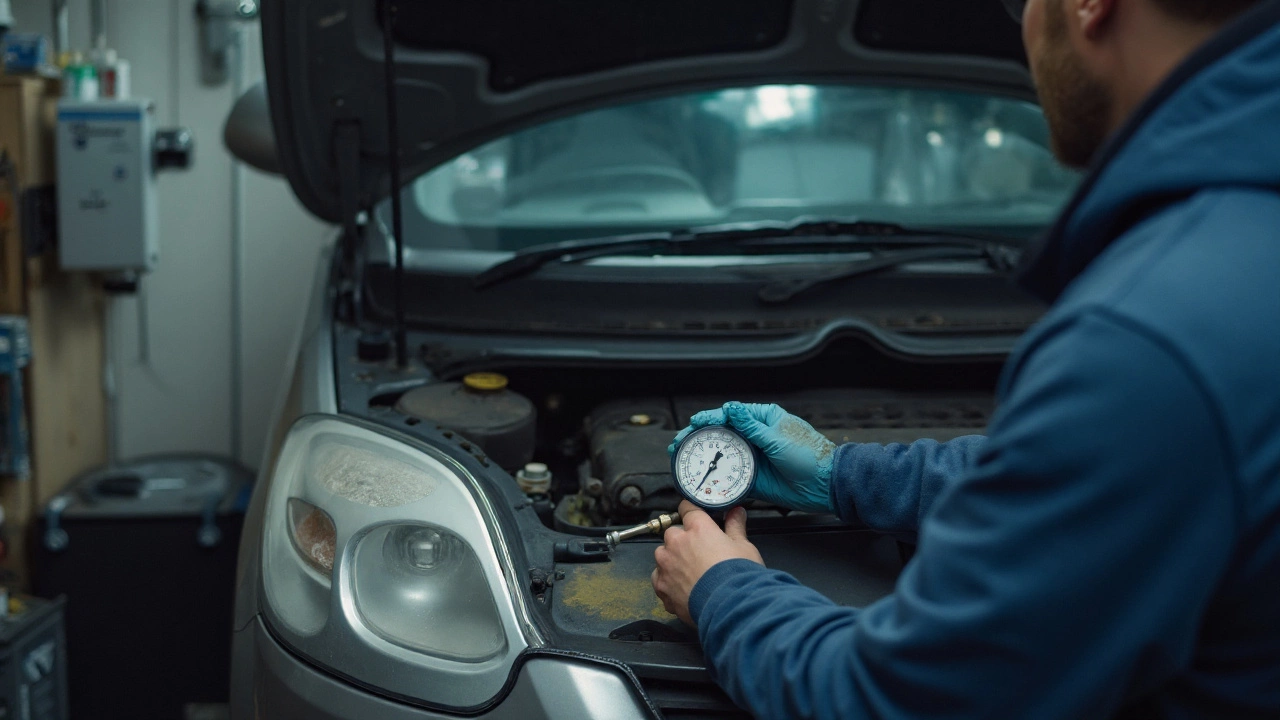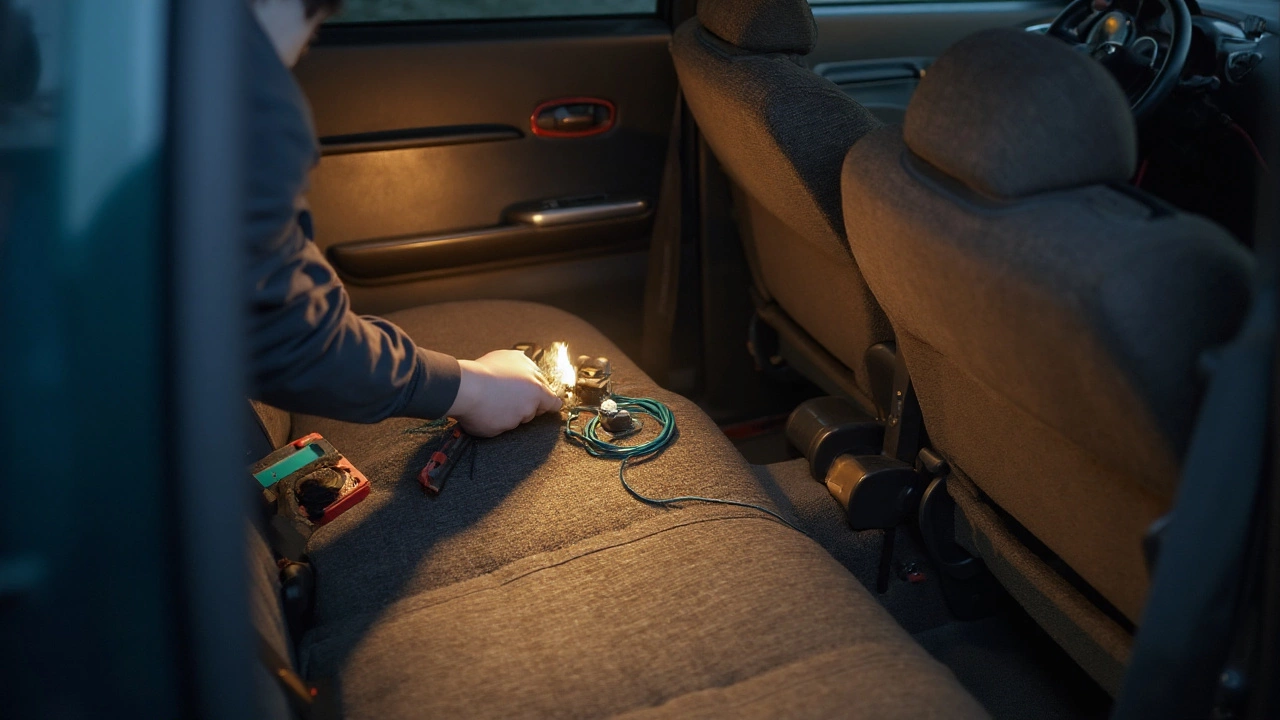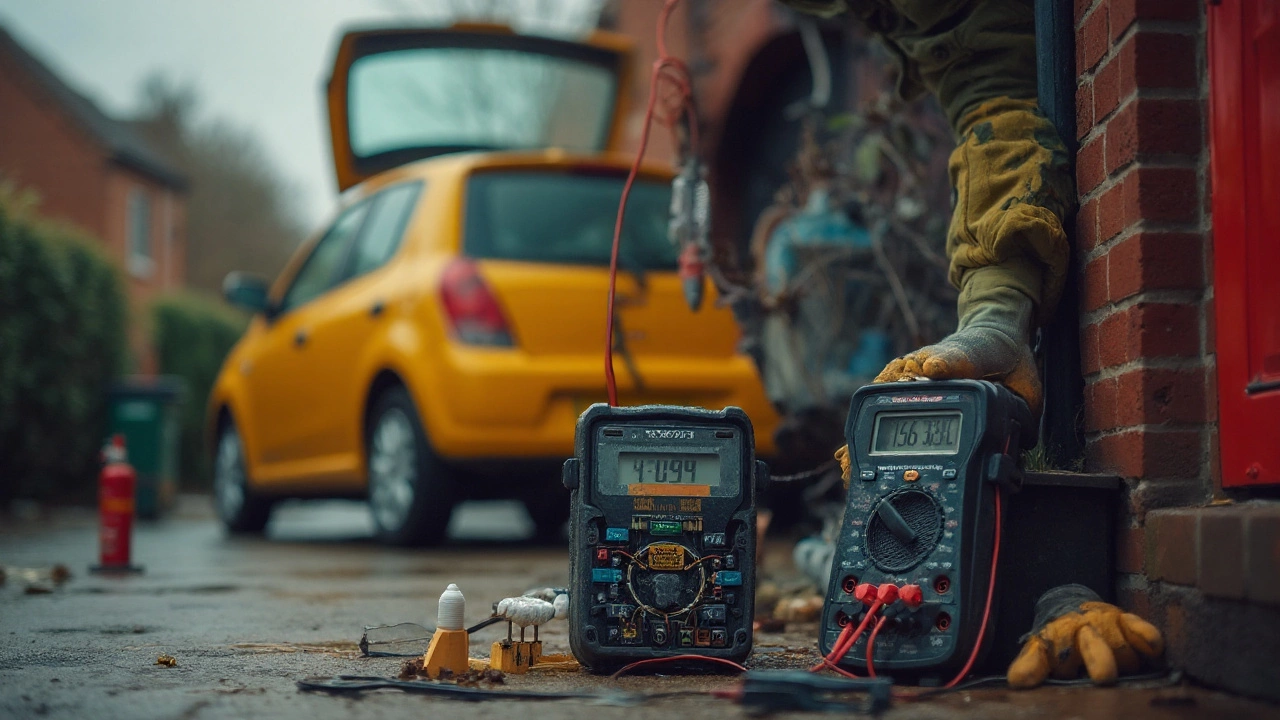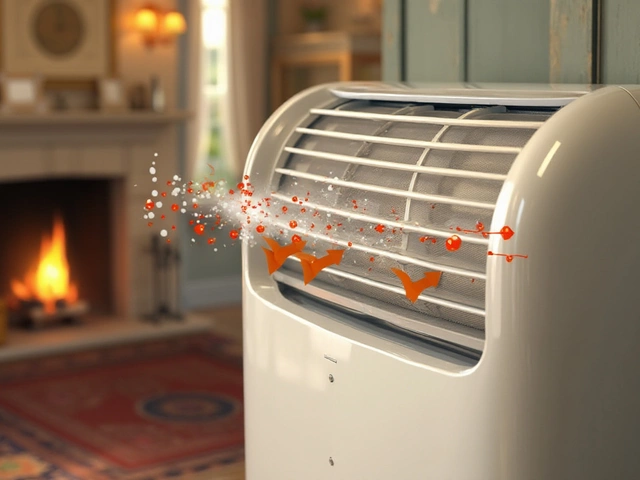If your car won’t start, stumbles under load, or whines from the tank, you’re probably bracing for an expensive fuel pump replacement. Here’s the bit you came for: sometimes you can get it working again without fitting a new pump. Not every “bad pump” is actually bad-relays fail, grounds corrode, filters clog, and safety switches trip. I’ll show you how to zero in on the real problem, try repairs that actually work, and be honest about what’s temporary versus what can last. I live in Manchester and wrench on our own cars in a tight terrace driveway, so everything here is doable with basic tools and common sense.
TL;DR - What actually fixes a “bad” fuel pump without replacing it
Most people click this because they want clear, actionable answers. Here’s the short list:
- Check the power path first: fuse → relay → inertia/impact switch (common on Fords) → wiring → ground. Many “dead pumps” are just a bad relay or a loose ground.
- Measure fuel pressure at the rail (petrol) or low-pressure side (diesel lift): if power is good but pressure is low, suspect a clogged filter, kinked line, dirty strainer, or a failing pressure regulator.
- Quick revival tricks: reset the inertia switch; swap in a known-good relay; clean/retighten the ground at the pump; replace a clogged filter; top up if the tank is very low (pumps overheat on fumes); in a pinch, a light rubber mallet tap on the tank can free a stuck pump motor-temporary at best.
- Use a PEA-based fuel system cleaner if the car sat and varnish is likely; it can free a sticky check valve or strainer. Don’t expect miracles on a truly worn pump.
- If pressure and power both check out, the pump itself is likely worn. No cheap fix there-budget for replacement, but at least you’ve avoided guessing.
Step-by-step: Safe diagnostics that isolate the cause fast
You’ll knock out 80% of fuel “pump” problems with these steps. Safety first: petrol vapour is no joke, and diesel under high pressure is dangerous to skin and eyes. Work cold, have a fire extinguisher (Class B), don’t smoke, and ventilate the area.
“Before disconnecting any fuel line, relieve system pressure to avoid fuel spray and fire risk.” - Haynes Service and Repair Manual (Petrol & Diesel Fuel Systems)
Tools you’ll need (basics):
- OBD-II scanner (even a £20 Bluetooth dongle helps)
- Fuel pressure gauge (Schrader adapter for most petrol rails)
- Multimeter (volts and continuity)
- 12V test light (helpful for quick checks)
- Socket set, pliers, trim tool, safety glasses, gloves
Now, follow this order. It’s the fastest route to the truth.
- Confirm it’s a fuel issue, not spark or security. Spray starting fluid into the intake (briefly). If it fires then dies, fuel delivery is the prime suspect. If there’s no change, check spark and immobiliser/anti-theft first.
- Listen for the prime. Turn key to On (not Start). Most cars run the pump for 2-3 seconds. Hear a soft whirr from the tank? If silent, don’t assume the pump is dead yet.
- Check the fuse and relay. Pull the fuel pump fuse; if blown, replace once and watch for it to blow again (short or failing pump). Swap the fuel pump relay with an identical one (often A/C or horn) to test. A weak relay is a common culprit and costs £10-£25.
- Reset the inertia/impact switch (if equipped). Common in many Fords and some others in the UK. Look in the passenger footwell, behind the glovebox, or boot area. If tripped, press to reset.
- Measure power at the pump connector. Access the top of the fuel pump (under rear seat or boot in many hatchbacks/saloons). With a multimeter or test light, check for 12V at key-on (during priming) and while cranking. No power? Trace back to relay, fuse, ignition switch, or a broken wire.
- Check the ground. High resistance at the ground point can make a good pump act weak. Unbolt the ground ring, clean to bare metal, retighten. Look for green corrosion or cracked wires.
- Measure fuel pressure. On petrol engines, connect a gauge to the rail’s Schrader valve (if fitted). Typical multi-point injection runs ~3.5-4.0 bar (50-58 psi); check your spec. On diesels, the high-pressure side is off-limits; if the car has a low-pressure lift pump, check that per spec (often 0.3-0.5 bar / 5-7 psi).
- Watch pressure behaviour. Key-on prime should bump pressure quickly; it should hold near spec at idle and under revs. Slow build or drop-off under load points to a clogged filter, collapsing hose, weak pump, or a bad pressure regulator/return valve.
- Scan for codes and fuel trims. Look for lean codes (P0171/P0174), low pressure control codes (P0087), or rail pressure errors. If trims are very positive at load, the engine is begging for fuel-it’s not just a sensor tantrum.
By this point, you’ll know whether you’re chasing electricity, plumbing, or the pump itself. Now for the fixes that don’t involve ordering a new module.

Fixes you can do without replacing the pump (what actually works)
Here are the repairs that most often bring a “dead” fuel pump back to life-or prove it’s not the pump in the first place.
1) Replace the fuel pump relay and check the fuse fit
Relays get hot, contacts pit, and a marginal relay can drop voltage to the pump. Swapping the relay is cheap and fast. Also check for loose fuses-some fuse boxes develop spread terminals. A relay that clicks but doesn’t pass current is common.
2) Clean and tighten the pump ground and connectors
I’ve fixed no-starts by doing nothing more than sanding a crusty ground under the rear seat. Unplug the pump connector, inspect for melted plastic or green corrosion, clean with contact cleaner, and re-seat. A bad ground makes pumps slow, noisy, and weak under load.
3) Reset the inertia switch
Hit a pothole hard or had a minor bump? The safety switch may have tripped. Press the reset button and you’re done. It’s a 30-second win that feels like magic.
4) Replace a clogged fuel filter (or pre-filter/strainer)
Many modern petrol cars have “lifetime” filters in the tank, but plenty still have serviceable inline filters. A £10-£25 filter can restore pressure immediately. If the filter is in the tank, some modules allow replacing just the strainer (sock). If you’re comfortable, you can remove the pump module, clean sediment, and fit a new sock-messy but effective if contamination is the issue.
5) Fix kinks, collapsed hoses, or pinched lines
After underbody work, it’s surprisingly easy to pinch a line with a jack. Replace any soft line that looks collapsed. In the tank, old rubber hoses can soften and collapse under suction-cheap to replace while you’re in there.
6) Restore supply voltage: wiring repair
Measure voltage at the pump while cranking. If you see much less than battery voltage, trace the drop: relay, connector, ground, ignition feed. A corroded splice under the carpet or a tired ignition switch can be the villain. Repairing a single bad connection can give the pump its life back.
7) Pressure regulator or return-line issues
On return-style systems, a stuck regulator can dump fuel back to the tank, starving the rail. Pull the vacuum hose (if equipped) and check for fuel-if it’s wet, the diaphragm is torn. On returnless systems with in-tank regulation, look for kinked return passages or signals telling the pump to slow down (module faults).
8) Add a quality PEA-based cleaner to deal with varnish
If the car sat through winter on E10, varnish can gum the strainer or check valve. A tank of fresh fuel plus a cleaner with polyetheramine can sometimes free it up. Manage expectations-this helps sticky, not worn.
9) Top up the tank to cool the pump
Electric pumps are cooled by fuel. Running near-empty on hot days can make a weak pump act up. Fill to half and see if the noise or stumble eases. If it does, you’ve learned something about pump health.
10) Temporary “tap the tank” trick (only as a get-you-home)
If you’re stranded and the pump is stuck, a light tap on the tank with a rubber mallet while someone cranks can jolt it awake. This is the Hail Mary. If it works, drive straight to a safe spot to diagnose properly; it won’t last.
“A fuel pump that responds to tapping has worn commutator brushes and is at the end of its service life.” - Bosch Automotive Handbook
Diesel-specific quick wins
- Prime the system: use the primer bulb or hand pump after filter changes.
- Check the fuel cut-off solenoid on the injection pump (12V supply, clean ground).
- Look for air leaks on the suction side-clear lines often show bubbles; cracked O-rings on filter housings are common.
- Replace the filter even if it “looks” fine; waxing and microbe growth clog media invisibly.
Cheat sheets: Decision trees, specs, and what to check first
Use these quick references when you’re elbow-deep and want a definitive next step.
Fast decision tree
- No sound from pump at key-on → Check fuse/relay → Check inertia switch → Verify 12V at pump → If no 12V, fix power/ground → If 12V present, suspect pump or seized rotor.
- Pump runs but car won’t start → Check pressure at rail → If low, replace filter and inspect strainer → Check regulator/return → Check for kinks/collapsed hose → If still low with good power, pump is weak.
- Starts then dies after 2-3 seconds → Security/immobiliser or MAF/air issue → Confirm with codes/immobiliser light before blaming fuel.
- Stumbles at motorway speeds under load → Check pressure under load → Replace filter → Inspect voltage drop at pump under load → Suspect weak pump or bad ground.
Typical pressure targets (always check your spec)
- Petrol multi-point injection: ~3.5-4.0 bar (50-58 psi)
- Petrol direct injection (low-side feed to high-pressure pump): 3-6 bar depending on model
- Diesel lift pump (if fitted): ~0.3-0.5 bar (5-7 psi)
Note: Never crack open diesel common-rail lines. Pressures are dangerous. Focus on the low-pressure side only.
Common symptoms and the most likely no-replacement fix
| Symptom | Likely cause | Quick fix | Time | DIY cost (UK) |
|---|---|---|---|---|
| No pump sound at key-on | Blown fuse, bad relay, tripped inertia switch | Replace relay, new fuse, reset switch | 10-20 min | £10-£25 |
| Long crank, starts then stumbles | Weak voltage to pump, clogged filter | Clean ground, repair wiring, replace filter | 30-60 min | £10-£40 |
| Loss of power on hills/motorway | Low fuel pressure under load | Pressure test, new filter, inspect lines | 45-90 min | £10-£50 |
| Loud whining from tank | Low fuel level overheating pump, restricted strainer | Top up tank, add cleaner, inspect/clean strainer | 15-120 min | £10-£35 |
| Starts only after tapping tank | Worn pump brushes | Temporary tap, plan replacement | 5 min | £0 now, replacement later |
Checklist: Before you buy a pump
- Power delivered to pump (12V at prime/crank)
- Good ground (cleaned and tightened)
- Fuse/relay tested or swapped
- Inertia switch reset
- Fuel pressure measured against spec
- Filter replaced (inline or serviceable)
- No kinks, no collapsed hoses, no obvious leaks
- Tank at least half full (test again)
Do these and you’ll either revive the car or have hard proof you need a pump. Either way, no guessing, no wasted money.

Mini-FAQ and next steps
Can I repair the pump motor itself?
Realistically, no. In-tank electric pumps are sealed units; brush replacement and commutator cleanup are lab jobs, not driveway fixes. If the motor is worn, replacement is the honest path.
What about external add-on pumps?
On older cars with external pumps, you can sometimes clean or replace the strainer, check valves, and rubber mounts. But if the motor is noisy and pressure is low despite good voltage and a clean filter, it’s done.
Will a fuel system cleaner fix a weak pump?
No. Cleaners help with varnish and sticky valves/strainors, not worn bearings or brushes. Use them for cars that sat. If your pump needs a love tap to run, start planning.
I smell fuel-should I keep testing?
Stop and sort the leak. Even a slow seep near the rail is a fire risk. Replace seals and O-rings before continuing. Work cold and ventilated.
What’s the deal with UK petrol (E10) and pumps?
E10 can accelerate ageing in some older rubber parts and attracts moisture during storage. It doesn’t kill a healthy pump overnight, but long-term sitting with old E10 can create varnish. Fresh fuel helps.
My diesel cranks forever after a filter change. Did the pump die?
Probably not. You’ve got air in the system. Prime it properly with the bulb or hand pump and check all O-rings. A tiny air leak can mimic fuel starvation.
Is it safe to run the tank low?
Try not to. The pump uses fuel for cooling and lubrication. Repeatedly running near-empty shortens its life and can make a marginal pump misbehave.
Can the immobiliser make it look like a fuel pump fault?
Yes. Many cars will crank and die after 2-3 seconds if the immobiliser blocks injector operation. Watch the dash light and scan for related codes before you chase fuel ghosts.
Do roadside clubs see many true pump failures?
Batteries and alternators top the list for call-outs in the UK. Fuel issues happen, but a lot of “pump failures” turn out to be relays, wiring, or filters. That’s why we test before we buy.
Any pro tips from the driveway?
Two: 1) Always measure voltage at the pump under load, not just key-on; a relay that passes 12V at rest can sag when the pump draws current. 2) When swapping relays, mark the known-good one so it doesn’t “wander” later. Ask me how I know.
Next steps if you’re still stuck
- Confirm spark and compression so you’re not tunnel-visioned.
- Borrow a better fuel pressure gauge; cheap ones can lie.
- Run a direct fused jumper to the pump (briefly) to rule out vehicle wiring-if pressure rises, the car’s wiring/relay path is weak.
- If only the tank strainer is clogged and your module allows it, replace the sock and clean the bowl. Wear gloves and dispose of fuel-soaked rags safely.
- Document readings (voltage, pressure) before buying anything big. It’s easier to return parts you didn’t need when you can prove the fix.
One last practical note from my own street in Manchester: parking is tight and rain is constant. Lay down a waterproof sheet under the rear seat before you start, keep a lid for any hose ends, and have a second pair of hands if you’re lifting out a full tank module. My partner Asher has saved more than one float arm from being bent just by holding a torch at the right angle.
If you’ve worked through this guide and found your fix, brilliant-you’ve just saved yourself the price of a pump and a day in a waiting room. If your tests point to a worn motor, at least you’ll order the right part with confidence and no regrets.
And yes, this is exactly how I’d fix fuel pump without replacing-by proving whether the pump is the problem or the scapegoat, and only replacing it when the numbers say so.




